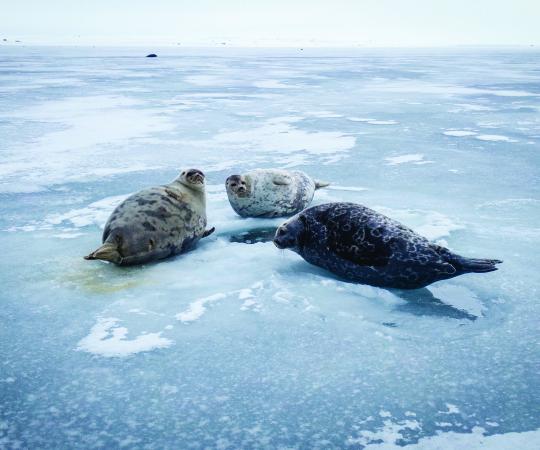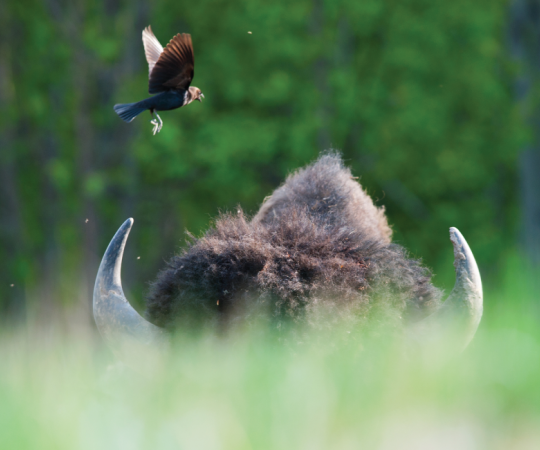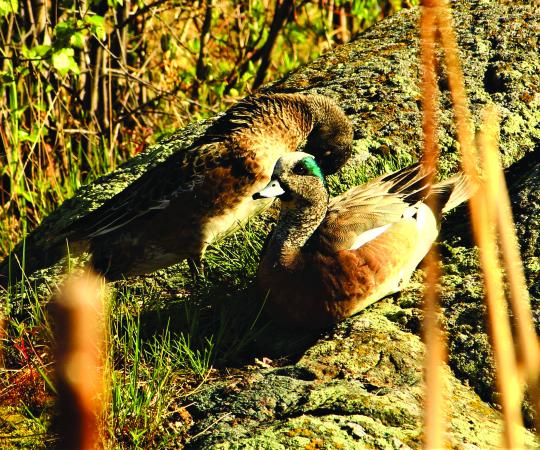When hunter Joe Nasogaluak is out on the land, he often looks towards Tuktoyaktuk’s sprawling field of pingos to help him find his way.
Even as a child, the ice-cored hills acted as a navigation point, as they appeared like many snowy (or grassy, depending on the time of year) volcanoes, peppered around pools of water on an otherwise flat landscape. They’re a landmark for most people growing up around the NWT community.
“When we were young kids hunting ptarmigan, our parents would tell us, ‘Don’t go outside of where the pingos are,’” he says. “I was told that then and I still tell my kids that today.”
Just outside of the Beaufort Delta town is the Pingo Canadian Landmark, where over a dozen dome-shaped hills rise above the flat tundra. But it’s not the only place where pingos can be found.
Many smaller pingo-like hills dot the landscape in parts of northern Russia, only there’s one big difference between the hills here and there: in Russia, many of them are exploding.
Over the last few years, Russian scientists have been seeing these natural landmarks disappear quite dramatically—literally exploding and throwing sediment and ice across the landscape. In their place, they leave massive craters that can be as deep as 53 metres (almost as tall as the Leaning Tower of Pisa).
“The hole of a pingo can be very deep, so you don’t want to fall in,” says research scientist Stephen Wolfe, who leads the Geological Survey of Canada project, which has been studying permafrost in subarctic environments.
At fault for the blow-outs is climate change. Wolfe explains there are wells of gas underneath the ground in Siberia that are seeping upward through the permafrost as it thaws. The pressure within the hills’ cores then builds up so quickly that it causes them to explode.
“If the ground thaws, [the gas within the core] can more rapidly move upwards to escape,” says Wolfe.
Pingos only appear in permafrost environments where lakes have drained. The features then suck up the groundwater in the soil and form ice cores, while hills grow around it. Canada’s North doesn’t have the volume of gas wells Russia does, but some of Tuktoyaktuk’s pingos are susceptible to methane release and they, too, could potentially rupture.
There are several offshore pingos in the Beaufort Sea, where there is more gas underground than there is on land, and Wolfe says those ice cores are more likely to melt quickly and to ultimately cause explosive pressure.
Pingos on land, meanwhile, are more susceptible to collapse. About five per cent of Tuk’s pingos have collapsed because the ice inside them has melted. The change can happen slowly, as even Nasogaluak has noticed thanks to his work as an artist.
“I have some drawings [of the pingos] from when I was probably about 10 years old,” he says. Comparing his illustrations to what he sees today, Nasogaluak says some of the pingos today look flatter. “You can see it’s changing. It’s a moving, living thing.”
The area’s tallest pingo, Ibyuk (meaning “thick” in Inuvialuktun) is actually growing, however. It currently reaches 49 metres in height, 300 metres in width and is expanding by a couple of centimetres a year due to the rising ice core.
Pingos, and the permafrost underneath, are subjects of scientific study as researchers race to understand climate change’s impact on the Arctic. Those efforts are how we’ve learned there are double the number of pingos originally thought to exist in the western Arctic. Research Wolfe and a team of scientists conducted last year, using digital mapping, discovered over 1,000 more pingos than had previously been identified in the area, bringing the total number up to 2,160. Within the national landmark, there are actually 14 pingos as opposed to the original eight accounted for.
“This area is both of natural and cultural significance, and is also visited by tourists—so finding [nearly] twice as many pingos in the landmark area is significant for the management and monitoring of this site,” writes Wolfe over email.
In the meantime, Parks Canada and other local organizations continue to monitor the site, to keep it free of litter, and to discourage too many visitors—particularly those on snowmachines—from eroding the pingos’ vegetation at a faster rate. However, Wolfe adds it’s only natural that many pingos will erode within one’s lifetime, while others form and grow.
In the meantime, Nasogaluak and other Northerners continue to view the pingos as a navigational tool and a lookout point. Nasogaluak often looks toward Ibyuk, which stands out from the expansive tundra. He can’t help but notice the beauty it adds to the landscape—and many others would agree.
As he says, “It’s our Eiffel tower.”









